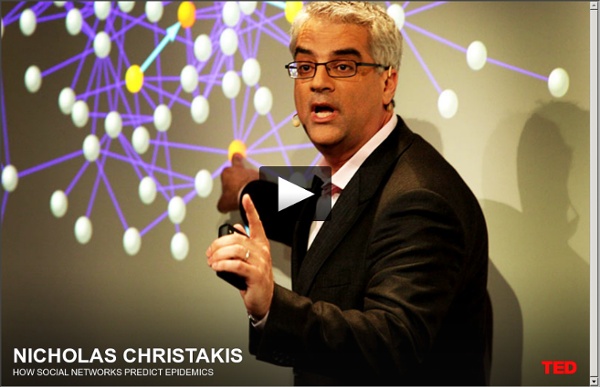



SoNIA - Social Network Image Animator Social Network Image Animator What is it? SoNIA is a Java-based package for visualizing dynamic or longitudinal "network" data. By dynamic, we mean that in addition to information about the relations (ties) between various entities (actors, nodes) there is also information about when these relations occur, or at least the relative order in which they occur. Our intention for SoNIA is to read-in dynamic network information from various formats, aid the user in constructing "meaningful" layouts, and export the resulting images or "movies" of the network, along with information about the techniques and parameter settings used to construct the layouts, and some form of statistic indicating the "accuracy" or degree of distortion present in the layout. What else is SoNIA for? In addition, we hope that SoNIA will have other uses. Another mode of use that SoNIA supports is that of a "browser" for time-based network data. Authors Other contributors include:
Technology, you're hired! Read Alan Sugar: The home computer business was starting to boom, it was a consumer electronic product as far as I was concerned, not a computer. Pregnant calculator I think is the name I gave them because the early day ones were the Sinclair, Commodore, Amiga and Atari and things like that, and all they were, were like just a fat calculator that you plugged into a television, a 14” television. What I decided was, our computer was going to look like a computer. In other words, the offering that we made was going to look like a, what people perceived to be a computer in those days, nice big keyboard, a separate screen so you don’t need to use the television in the home. So, okay, point made, where do we get the software from? The next thing was to try and make something more commercial, something more industrial, something more robust that everybody could use, not just kids, but could be used in an office. Time to market is one of the reasons for my success. Alan Sugar: I don’t think so.
Studying Social Interaction David R. Heise, Rudy Professor of Sociology Emeritus at Indiana University (heise at indiana dot edu), is a past editor of Sociological Methodology and of Sociological Methods & Research. His methodological research ranges from issues in quantitative modeling to computer applications in qualitative research to surveying norms and cultures. His social psychological research focuses on the affective and logical foundations of social interaction - in particular, Affect Control Theory (ACT) and Event Structure Analysis (ESA). Heise has received Distinguished Career awards from three sections of the American Sociological Association - Social Psychology, Sociology of Emotions, and Mathematical Sociology. Also, he received an award for outstanding contributions from the section on Sociology and Computers. Heise's publications include books: two essays in the Encyclopedia of Sociology: and an essay in the International Encyclopedia of the Social and Behavioral Science:
Terminal Cities Professor Simon Bell discusses 'Terminal Cities', the collection of buildings, vehicles, employees and passengers that comprise a modern airport. Use the tabs below to watch the video, listen to the audio or read the transcript. Then see how Simon begins his exploration of Terminal City using some simple diagramming techniques. There's also some facts and figures to further illustrate just how complex and busy Heathrow is. Learn more about the size, scale and complexity of a modern airport with Airport Live11, a new four-part series coming to BBC Two from Monday 17 June. Video A paradox and a conundrum—Professor Simon Bell discusses Terminal City. Audio Copyright open university Transcript When we look at London Heathrow (LHR) we are looking at Terminal City. Airports are cities? The conundrum of Terminal City. Lots of excitement, the gateway to the world. LHR is just the biggest example of the paradox - we want it, we need it and we hate it. Rich picture Spray diagram Heathrow facts
University of Michigan, Center for the Complex Study of Systems Khan Academy Scale-free network A scale-free network is a network whose degree distribution follows a power law, at least asymptotically. That is, the fraction P(k) of nodes in the network having k connections to other nodes goes for large values of k as where is a parameter whose value is typically in the range 2 < < 3, although occasionally it may lie outside these bounds.[1][2] History[edit] In studies of the networks of citations between scientific papers, Derek de Solla Price showed in 1965 that the number of links to papers—i.e., the number of citations they receive—had a heavy-tailed distribution following a Pareto distribution or power law, and thus that the citation network is scale-free. Barabási and Albert proposed a generative mechanism to explain the appearance of power-law distributions, which they called "preferential attachment" and which is essentially the same as that proposed by Price. (that is, the number of edges incident to ) by . Characteristics[edit] Random network (a) and scale-free network (b).
iTunes U - Aprende todo, en cualquier momento y lugar.